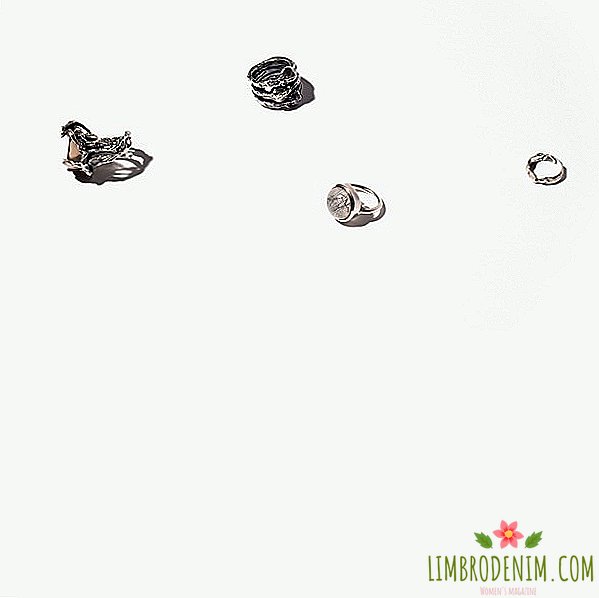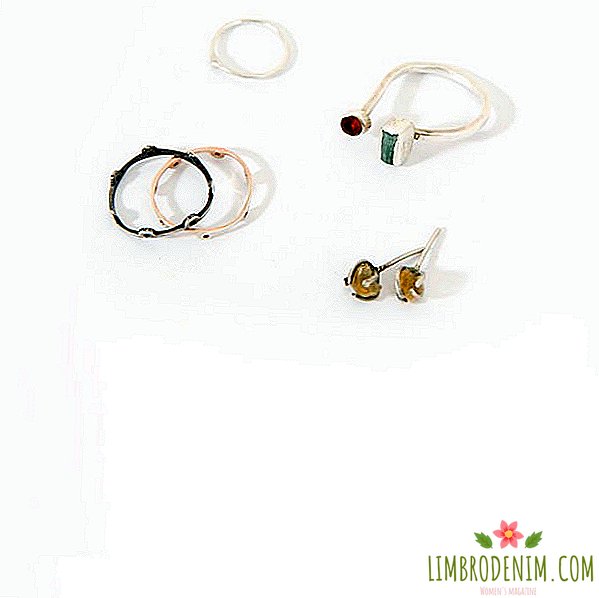What you need to know about breast cancer: From risk factors to prevention
October is the month to fight breast cancer. Up to 25% of all cancer cases in women are breast cancer. In Russia, about 54,000 women hear this diagnosis every year. None of us are immune from this disease, and public awareness around the problem grows every year: celebrities take part in charity events, women who have survived cancer, take pictures and openly talk about their struggle, and their loved ones turn daily support into social saying.
If breast cancer is detected at the earliest stages, the probability of recovery is about 94%, therefore it is extremely important to know what kind of disease it is and whether its risk can be reduced, how to recognize the cancer at early stages and when it is worth contacting a doctor. Our questions are answered by a gynecologist, Candidate of Medical Sciences Tatyana Rumyantseva.
What is breast cancer?
Breast cancer is a malignant tumor, which means that it can grow into neighboring tissues or spread (metastasize) to other organs. The overwhelming majority of breast cancers are among women, but in men this disease also occurs. The development of breast cancer is a long process that takes years. Everything begins with a change of a single cell: it differs in structure from normal breast cells, it becomes "uncontrollable" - it begins to actively divide, forming a growing tumor. It is believed that on palpation of the mammary gland it is possible to determine formations with a diameter of one centimeter or more, but it takes an average of nine years to achieve this size (for all patients, the growth rate is different and ranges from two to eighteen years). In some patients, the growth rate is so low that the tumor does not cause trouble until the end of life.
Breast cancer is the most dangerous of all breast diseases, but benign tumors are much more common. They may increase the risk of cancer, but they do not in themselves threaten a woman’s health and in most cases do not require treatment. It is extremely important to correctly diagnose the condition, so as not to miss breast cancer in the early stages. Actress Cynthia Nixon, known for her role in the TV series "Sex and the City," learned that she had breast cancer during a regular mammography (her mother had this disease, because Nixon regularly underwent regular check-ups).
However, with this method of diagnosis it is not always possible to say for sure whether the disease is benign or requires more careful attention. In many cases, a biopsy is recommended - the collection of a small piece of breast tissue. It is also almost impossible to predict in advance how a cancer tumor will behave in a particular patient. Without the use of screening (preventive) studies, detection of breast cancer is possible only in the later stages. The annual examination cannot guarantee the prevention of the disease by 100%, but it will significantly increase the patient's chance of recovery due to earlier detection of the tumor.
Although modern preventive measures (we will discuss them further) allow us to detect breast cancer before the onset of any symptoms, there are also clinically pronounced forms - from thickening and swelling of the gland to retraction and thinning of the skin, redness and so on. In some cases, the disease spreads to the lymph nodes that are under the armpit or in the area of the clavicle, and causes their enlargement or thickening before the tumor in the breast itself grows and can be felt. These symptoms can be detected in benign tumors, but if any of them appear, a thorough examination is necessary.
How to minimize the risk of disease
Immediately, we note that these factors increase the likelihood of the disease, but do not cause it. Most women have one or two breast cancer risk factors, but they will never have this disease. Conversely, patients with breast cancer do not have any of the known risk factors other than gender or age. Anyway, it is important to know about these markers. There are indicators that are impossible to influence. In addition to gender, it is also age: the older the woman, the higher the risk of developing breast cancer (approximately 12.5% of cases are registered in women younger than 45 years, and after 55 years - about 66% of all cases). The average age of male patients is 68 years. In addition to common risk factors - from family history and mutations in genes to obesity or radiotherapy, they also have specific ones, such as Kleinfelter syndrome and some testicular diseases.
Heredity also plays a role: 5-10% of breast cancer cases are associated with mutations in the genes, the most studied and significant of which are BRCA1 and BRCA2. When they are detected, the risk is about 50%. Today, it is possible to undergo tests to identify mutations in these genes. It is important to remember that identifying mutations is not a diagnosis, but a sign of an increased likelihood of developing cancer. This is influenced by the burdened family history: if the mother was diagnosed with breast cancer, the mother doubles the risk of developing the disease; if the disease has affected two close relatives, the risk is tripled. Women of the European race are most prone to this disease. Among the risk factors are some benign breast diseases, and early onset of menstruation (up to 12 years), and late menopause (later than 55 years). It has been proven that the level of female estrogen hormones and breast cancer are closely related: the longer estrogen affects the breast tissue and the higher the level of these hormones in the blood, the higher the risk of breast cancer. Moreover, estrogens are able to accelerate the growth of cancer cells that have already appeared.
If a mother, sister or daughter was diagnosed with breast cancer, the woman’s risk of developing the disease doubles; if the disease has affected two close relatives - the risk is tripled
There are also risk factors associated with lifestyle, and they can be influenced. Many of them are also determined by the level of production of estrogen. Adipose tissue is capable of producing these hormones, respectively, with a significant amount of it in the body increases the effect of estrogen on tissue - even after menopause, when the ovaries stop producing this hormone. According to research results, the absence of pregnancies and lactation also increases this figure. Many avoid oral contraceptives for fear of cancer, but such caution is not entirely justified. If we summarize the data from the available studies, it turns out that women taking hormonal contraceptives have a higher risk of developing breast cancer compared to those who have never taken them. However, this increase is insignificant (only 1.08 times), and after discontinuation of the use of contraceptives the risk of developing breast cancer returns to its original level.
Taking hormonal drugs after menopause to replace hormones previously produced by the ovaries also slightly increases the risk of developing breast cancer, while taking estrogen drugs without progesterone does not increase the chances of getting sick. In addition, among the risk factors are alcohol abuse and low physical activity. In turn, even small but regular exercise has a beneficial effect on predisposition: for example, regular walking at a fast pace (only 75–150 minutes a week) reduces the risk of developing breast cancer by 18%. The effect of certain phenomena on the development of breast cancer is unclear: among them chemical carcinogens in cosmetics or smoking. Despite numerous studies, the link between these substances and breast cancer remains presumptive, but not proven. There are also obvious myths: the use of antiperspirants, wearing bras with underwire and push-up, medical abortion, silicone implants, topless tanning do not lead to breast cancer.
What methods of prevention and diagnosis are the most effective
There is no 100% effective method of preventing breast cancer, but there are ways to reduce the risk of developing the disease. Minimize alcohol intake, eat plenty of vegetables and fruits, create for yourself a balanced diet with restriction of fat and fried, watch out for its total caloric content in order to prevent excessive increase in body mass index. Exercise: 150 minutes of moderate-intensity training or 75 minutes of active training per week helps reduce the risk of developing the disease.
If a woman is at risk, there are several ways to reduce it. First you need to consult with a specialist, before deciding which way to choose and whether there is a need for it. Today, it is possible to undergo genetic testing, which, by a blood test, will determine whether you have mutations in the BRCA genes. These mutations cannot appear or go away during life, so testing is possible at any age, so a one-time analysis is sufficient. However, the result of genetic testing does not allow to make an unequivocal conclusion: the absence of mutation does not guarantee the absence of cancer, just as the presence of mutation does not guarantee its development.
There are hormonal drugs to reduce the risk of developing breast cancer. They have many side effects, and therefore they should be used only in very high-risk groups after careful examination and under the supervision of doctors. Women who have an extremely high risk of developing cancer may prefer mastectomy (removal of the breast) or ovariectomy (removal of the ovaries) as a preventive measure: this is what actress Angelina Jolie and journalist Masha Gessen did. We had material about the features and pitfalls of these procedures. It is important to understand that even in the case of a high risk, there can be no assurance that a woman will develop breast cancer, while postoperative recovery and possible side effects can be quite severe both in a physiological and psychological sense. In any case, the decision to conduct such an intervention remains for the patient and his doctor.
The main methods for examining the mammary glands are mammography, ultrasound and magnetic resonance imaging (MRI). Mammography - x-ray of the mammary glands - is a common option for early detection of breast cancer and allows you to identify a tumor before it reaches palpable sizes. Although mammography does not have 100% sensitivity, it helps reduce breast cancer mortality by 15–20%. When conducting a mammography, the body is exposed to radiation, but its dose is significantly lower than in standard X-ray machines, and almost 10 times lower than the radiation that we encounter during the year of our life without any medical interventions.
Women who have an extremely high risk of developing cancer may prefer mastectomy or ovariectomy as a preventive measure.
In the case of pregnancy at the time of the examination it is necessary to notify the doctor about it: despite the fact that the risk for the child is minimal, usually mammography is not performed during pregnancy. Do not plan a mammogram for the week before your period, as the procedure can cause discomfort, and the interpretation of the results can be difficult. Doctors also advise against using deodorant on the day of the procedure: some of them may leave marks on the skin, which in the picture will be visible as spots.
There are drawbacks to mammography. According to various sources, X-rays "miss" from 6 to 46% of breast cancer cases. There is also the danger of “false positives”: in addition to groundless excitement, the result will be further unnecessary examinations, often costly. Plus, mammography often reveals benign changes that do not manifest in the patient and do not threaten her life. In many cases, when they are detected, doctors may prescribe overheating, including surgical intervention.
Another diagnostic method, ultrasound, is most often used for additional visualization of changes detected during mammography. The most reliable method of examination is magnetic resonance imaging (MRI): the sensitivity of the device reaches 97-100%. MRI helps detect more cases of cancer than mammography, however, it is worth remembering the important drawback of the method: it shows much more “false positive” results (approximately 60% of cases).
Preventive examinations are shown to all women, regardless of the risk group. However, recommendations regarding the frequency of the survey differ not only in different countries, but sometimes within the same country. For example, in the United States, the College of Obstetricians and Gynecologists (ACOG) recommends an annual survey for women aged 40 years and older, while the American Cancer Society shows an annual survey for women aged 45-54 years, and for women 55 years and older - every two years. . In Russia, this issue is regulated by two orders of the Ministry of Health, and although the recommendations in these documents also diverge, the main method of preventive examination, mammography, remains common.
Why and how exactly you need to examine the chest
In about 20% of cases, breast cancer is not detected by mammography, but by palpation (palpation) of the mammary gland itself by a woman or a doctor, therefore, regular self-examination should be introduced into the habit of each of us. Palpation should be carried out once a month, the optimal time for this is several days after the end of menstruation. At this time, the presence of edema and tenderness in the chest area is less likely. After menopause, it is convenient to choose the first or last day of the month. It is important to remember that most breast lumps are benign; moreover, the density and heterogeneity of the tissue may be different in different places, new nodules and seals within the normal range may appear during the menstrual cycle. Attentions are demanded by those formations that are felt during the whole cycle. In any case, if you feel your chest for the first time and you are not sure if your sensations are normal, you should always consult a specialist - a mammologist or a gynecologist.
← How to conduct self-examination
For men, palpation and physical examination are the main methods of examination, but mammography is not recommended: for male patients, the study is not so informative. In men, breast cancer manifests itself very quickly, since the volume of the tissue of the gland itself is very small, so that the tumor is either easily felt or visible. In such cases, it is better to contact a surgeon, mammologist or endocrinologist (usually you have to go through all), and if a malignant tumor is detected, an oncologist will take care of it. Anyway, the earlier the formation is revealed, the more chances to avoid serious consequences.
Photo: photoprofi30 - stock.adobe.com, Mamuka Gotsiridze - stock.adobe.com, Jiri Hera - stock.adobe.com







